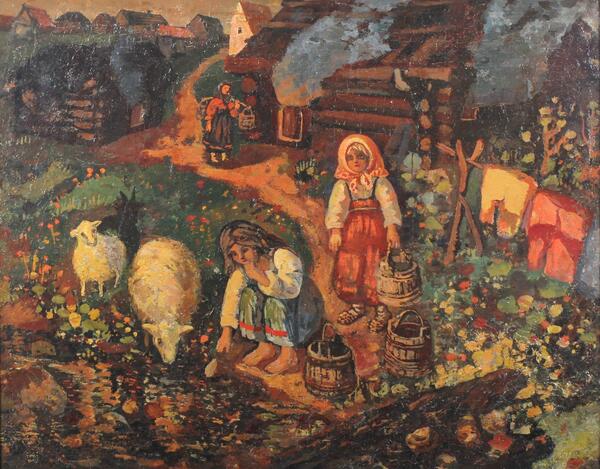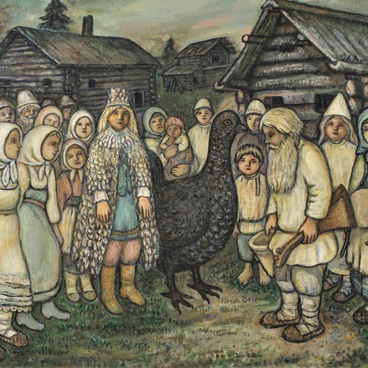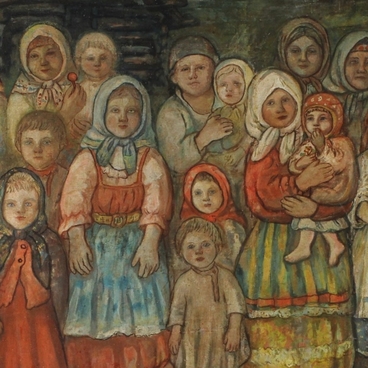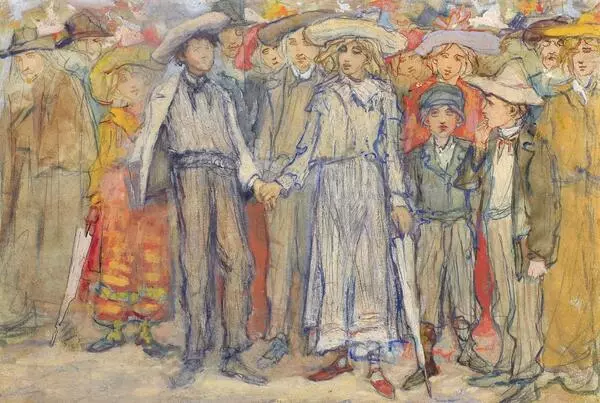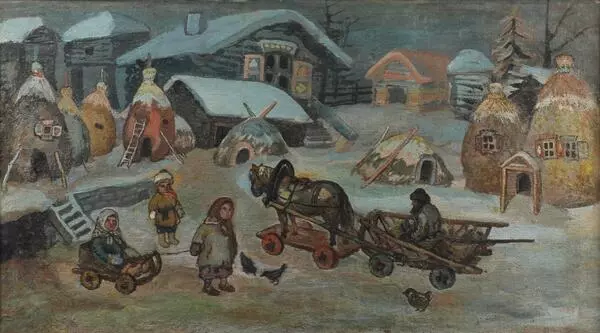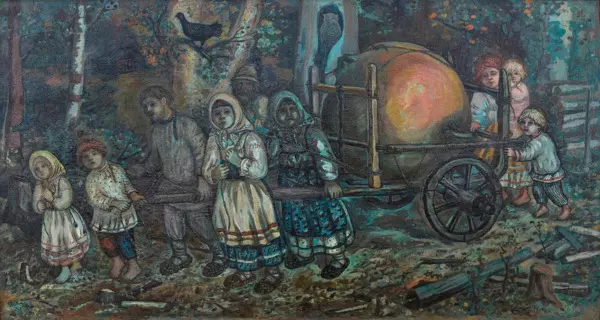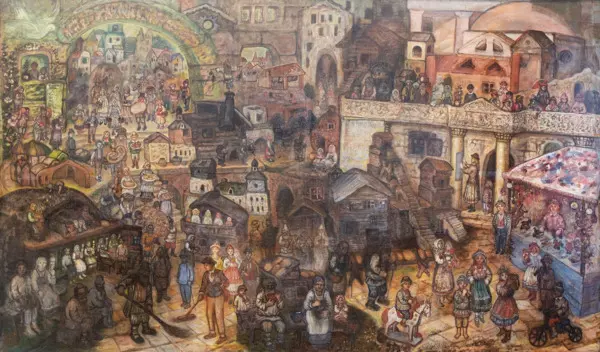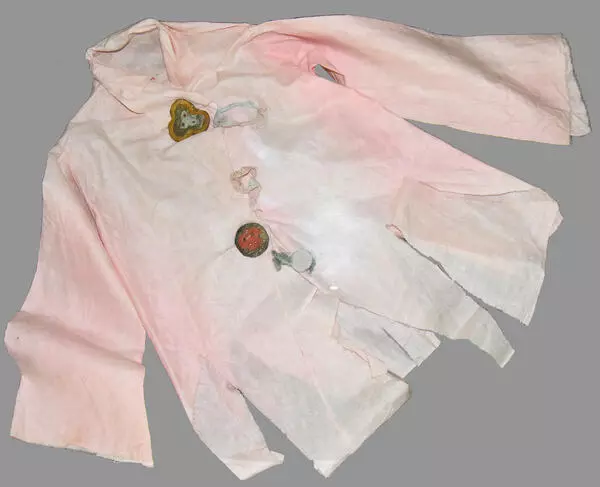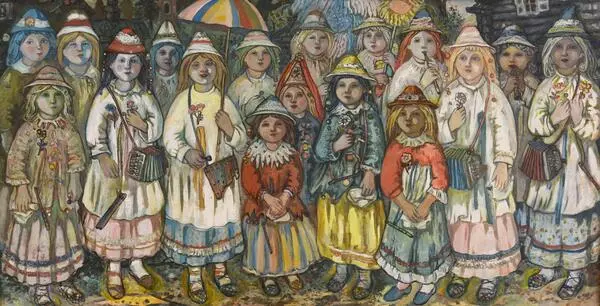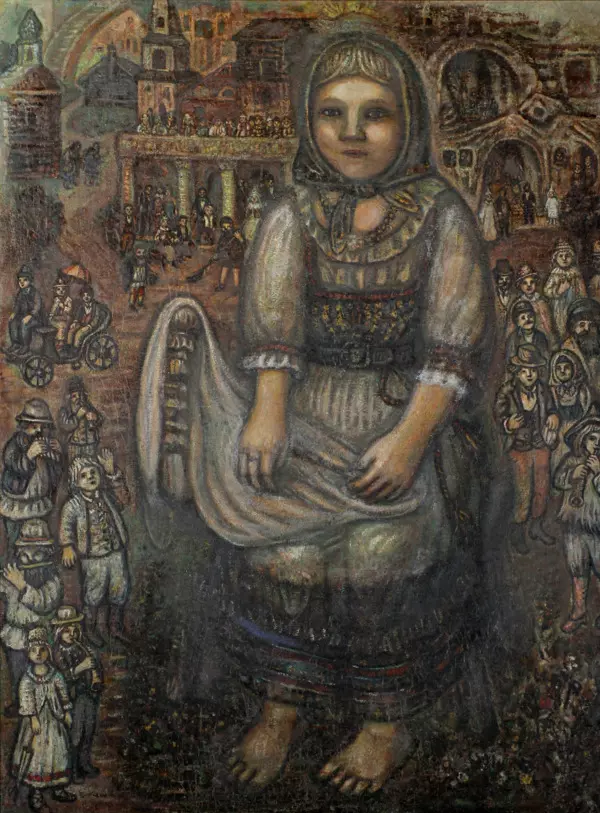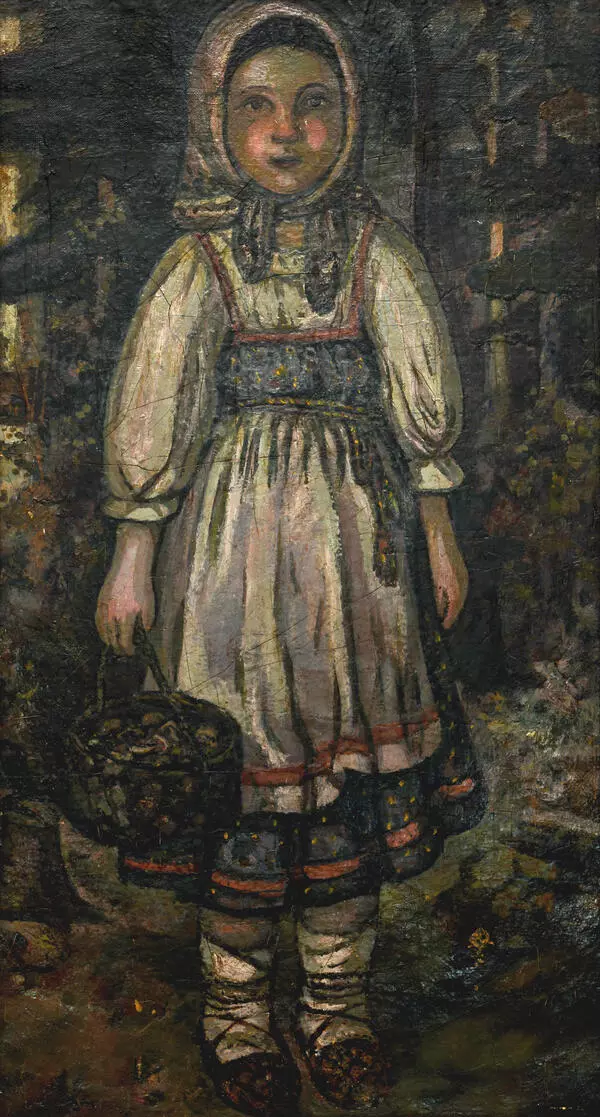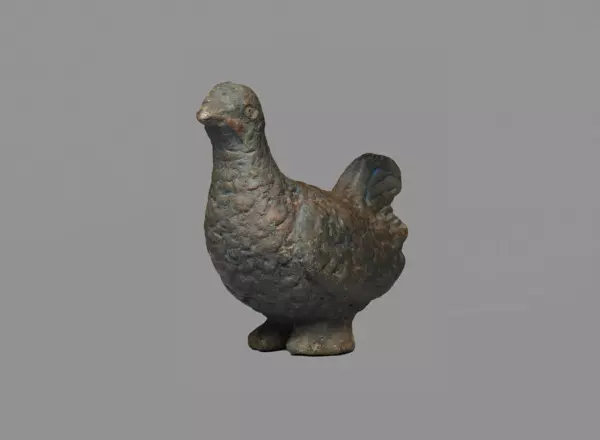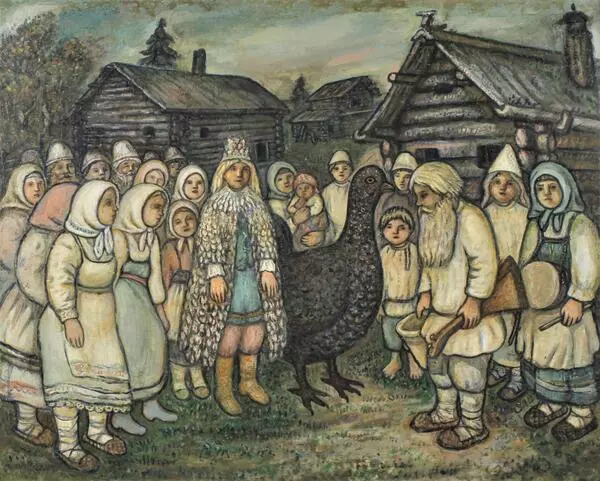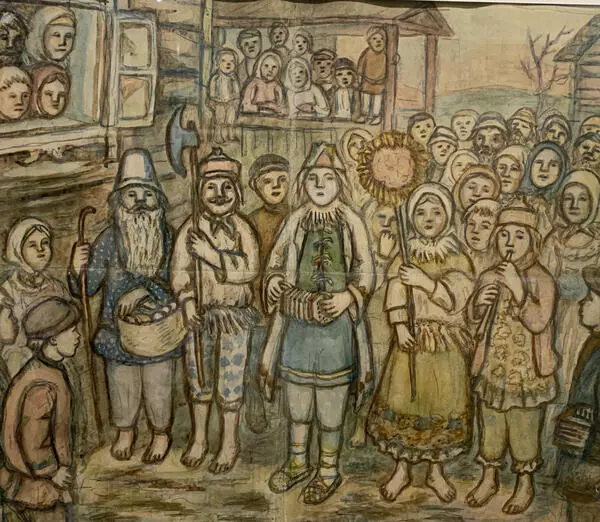Since his birth, Yefim Chestnyakov knew and understood the way of life of Russian peasants. In fact, life in the village was a constant source of inspiration to him. During the years immediately following his studies at the Academy of Arts, Yefim Chestnyakov adhered to the traditions of naturalism in art. At the time, he depicted scenes from the daily life of village inhabitants in his works of art. Everything in them was true to life and easily understandable to viewers.
Yefim Chestnyakov’s painting “A warm summer evening, heating up banyas” could be categorized as a work of art dedicated to the routine, every-day village life. The artist depicted a Saturday evening when peasants heated up banyas (Russian saunas), did laundry and went to get water, as was the norm, according to him. Owing to the attention he paid to the painting’s ethnographic detail, we know that the painted bathhouses were ‘black’ (without chimneys) and the smoke, once they were heated, was let out through entrances or via special holes. Clothes and linen were propped up to dry using wooden pitchforks and water was collected directly from a spring. The warm tones of the painting convey the typical atmosphere of a summer evening in a village located in central Russia. There is not even a hint of the hard work peasants performed in the faces of those depicted in this work of art, just as in others by Yefim Chestnyakov. In fact, the young peasant women who came to the spring look serene and tranquil. With his painting ‘A warm summer evening, heating up banyas’, the artist wished to show us humans coexisting harmoniously with the natural world.
Yefim Chestnyakov’s poem called “Heating up banya-bathhouses…” can be viewed as a written accompaniment to the painting.
“Steam came out of banya-bathhouses,
And smoke bellowed from black chimneys,
As clay ovens heated up,
Stones turned red-hot.
Maidens went to the river,
And poured the water from buckets they
carried by hand into a barrel.
They filled tubs with water,
And heated up the stones,
By placing them in the tubs.
(A tub with two sections
Serves a dual purpose).
— Red hot stones
Are placed with tongs in the
Warm section
To heat up the water in it.
— The other section with
cold water does not need any stones in it.
A tub with three sections
Is for bathing with soap.
Ladles and dippers are used
To take some water.
How splendid are
These ladles and dippers.
The poker and over fork next to each other
Look like brother and sister.
And here is a trough,
Its top is covered by canvas.
(This water with ash
Is alkaline).
There is also a silky green
New vennik, ” (a bundle of branches)
And a clay pot,
On a perch.
Hay is on the bench,
So the mistress is at home.
A pleasant steam has risen,
And the plug all covered in soot
Is lying near the window.
The smoke is bellowing out of chimneys,
People are taking water out of
Troughs and tubs.
They are here to steam
And then douse themselves.”
Yefim Chestnyakov’s painting “A warm summer evening, heating up banyas” could be categorized as a work of art dedicated to the routine, every-day village life. The artist depicted a Saturday evening when peasants heated up banyas (Russian saunas), did laundry and went to get water, as was the norm, according to him. Owing to the attention he paid to the painting’s ethnographic detail, we know that the painted bathhouses were ‘black’ (without chimneys) and the smoke, once they were heated, was let out through entrances or via special holes. Clothes and linen were propped up to dry using wooden pitchforks and water was collected directly from a spring. The warm tones of the painting convey the typical atmosphere of a summer evening in a village located in central Russia. There is not even a hint of the hard work peasants performed in the faces of those depicted in this work of art, just as in others by Yefim Chestnyakov. In fact, the young peasant women who came to the spring look serene and tranquil. With his painting ‘A warm summer evening, heating up banyas’, the artist wished to show us humans coexisting harmoniously with the natural world.
Yefim Chestnyakov’s poem called “Heating up banya-bathhouses…” can be viewed as a written accompaniment to the painting.
“Steam came out of banya-bathhouses,
And smoke bellowed from black chimneys,
As clay ovens heated up,
Stones turned red-hot.
Maidens went to the river,
And poured the water from buckets they
carried by hand into a barrel.
They filled tubs with water,
And heated up the stones,
By placing them in the tubs.
(A tub with two sections
Serves a dual purpose).
— Red hot stones
Are placed with tongs in the
Warm section
To heat up the water in it.
— The other section with
cold water does not need any stones in it.
A tub with three sections
Is for bathing with soap.
Ladles and dippers are used
To take some water.
How splendid are
These ladles and dippers.
The poker and over fork next to each other
Look like brother and sister.
And here is a trough,
Its top is covered by canvas.
(This water with ash
Is alkaline).
There is also a silky green
New vennik, ” (a bundle of branches)
And a clay pot,
On a perch.
Hay is on the bench,
So the mistress is at home.
A pleasant steam has risen,
And the plug all covered in soot
Is lying near the window.
The smoke is bellowing out of chimneys,
People are taking water out of
Troughs and tubs.
They are here to steam
And then douse themselves.”

